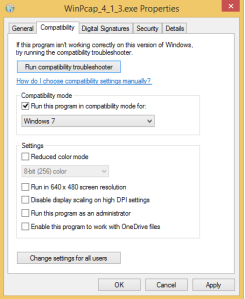Active Directory Partitions and replicas form firm foundation for Active Directory Replication. For any enterprise Active Directory infrastructure, there will be 10’s to 100’s of Domain Controllers spanned across different sites supporting multiple Active Directory Domains in a Forest.
Below table lists Active Directory Partitions and its roles.
| Serial Number | Active Directory Partition | Forest Wide | Domain Wide | What does it store | Replication |
| 1 | Configuration Partition | Yes. only one Configuration partition per Forest | Store information about Sites, services , extended permissions etc.. | Replicate across all Domain controllers in the Forest | |
| 2 | Schema Partition | Yes. only one Schema partition per Forest | Schema definitions, classes , attribute definitons of all AD Objects | Replicate across all Domain controllers in the Forest | |
| 3 | Domain Partition | Yes. One Per Domain | Stores user objects, Computer objects , Organizational Units, Groups etc.. | Replicated only to Domain controllers within Domain | |
| 4 | Domain Partition (Global Catalog) | Yes. One Per Domain | Stores partial set of attributes from different directory partitions ( domains) | Replicated across all Domain controllers in the Forest | |
| 5 | Application Partition | Yes. Any number of Application Partitions | Stores application specific data | Replicated across specific Domain Controllers in the Forest |
With the information above, we will do a little math on a conceptual Organization which is spread across different sites and having two Active Directory Domains in a AD Forest.
Solution Architecture Diagram
Active Directory Replica Chart
| Domain | AD Sites | Domain Controller | Configuration Partition | Schema Partition | Domain Partition A | Domain Partition B |
| Domain A | Primary Site | Global Catalog PS | Full Replica | Full Replica | Full Replica | Partial Replica |
| Domain A | Primary Site | Domain Controller 1 PS | Full Replica | Full Replica | Full Replica | |
| Domain A | Primary Site | Domain Controller 2 PS | Full Replica | Full Replica | Full Replica | |
| Domain A | Branch Site 1 | Global Catalog BS1 | Full Replica | Full Replica | Full Replica | Partial Replica |
| Domain A | Branch Site 1 | Domain Contorller BS1 | Full Replica | Full Replica | Full Replica | |
| Domain A | Branch Site 2 | Global Catalog BS2 | Full Replica | Full Replica | Full Replica | Partial Replica |
| Domain A | Branch Site 2 | Domain Controller BS2 | Full Replica | Full Replica | Full Replica | |
| Domain B | Primary Site | Global Catalog PS | Full Replica | Full Replica | Partial Replica | Full Replica |
| Domain B | Primary Site | Domain Controller PS | Full Replica | Full Replica | Full Replica | |
| Domain B | Branch Site 1 | Global Catalog BS1 | Full Replica | Full Replica | Partial Replica | Full Replica |
| Domain B | Branch Site 1 | Domain Contorller BS1 | Full Replica | Full Replica | Full Replica | |
| Domain B | Branch Site 2 | Global Catalog BS1 | Full Replica | Full Replica | Partial Replica | Full Replica |
| Domain B | Branch Site 2 | Domain Contorller BS1 | Full Replica | Full Replica | Full Replica |


